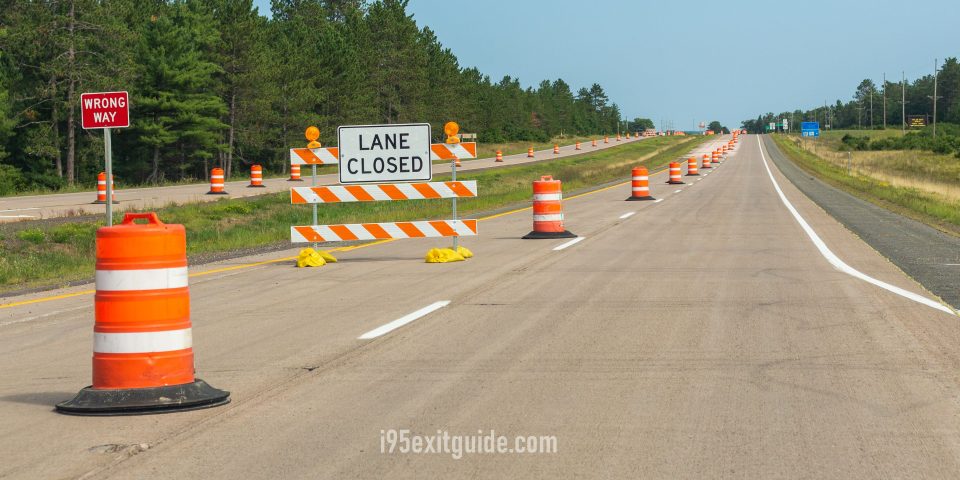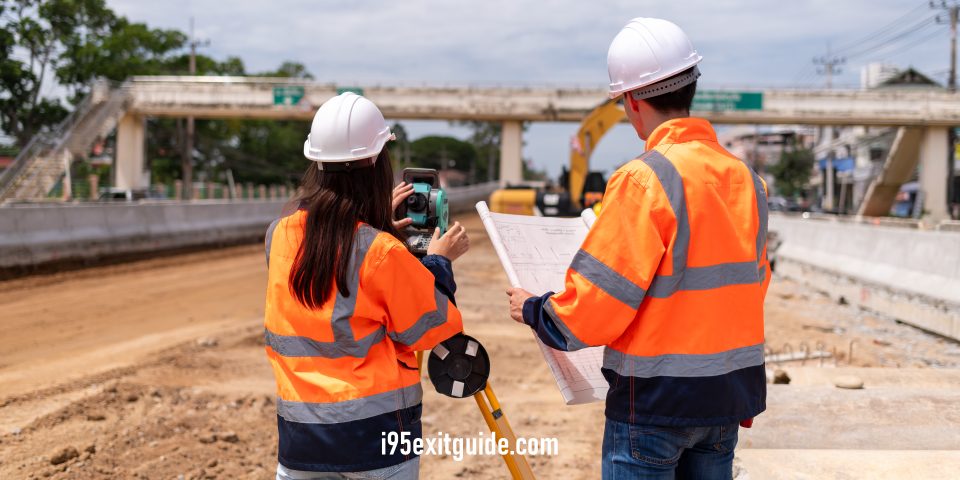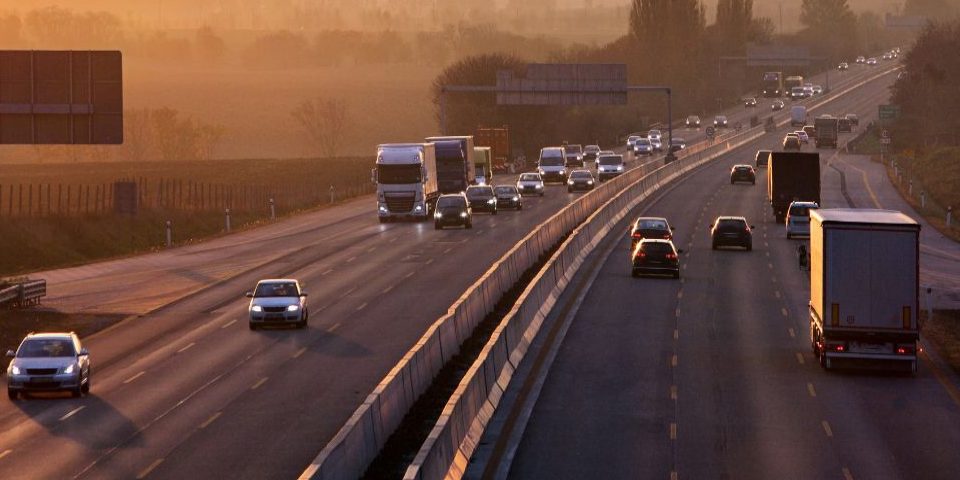Navigating through highway construction zones can be challenging and risky both for drivers and road workers. Heightened awareness and adherence to safety measures are essential for safe passage.
This guide provides practical tips to help motorists negotiate the hurdles of construction zones confidently.
Traveling through these areas requires patience, careful attention to temporary traffic patterns, and a willingness to adjust speed accordingly. With road work often resulting in unexpected detours and delays, preparing for disruptions can reduce stress and improve safety.
Understanding the importance of these protocols is not just a matter of personal safety but also a way to ensure the well-being of construction crews and fellow travelers.
Let’s explore the best practices for a secure journey amidst the complexity of heavy road construction.
Navigating Construction Zones Safely

Driving through highway construction zones can be tricky. Sudden changes in traffic patterns and unexpected obstacles may arise.
For your safety and the safety of others, understanding how to navigate these areas is crucial. Let’s dive into some key points to keep you safe on the road.
Understanding Traffic Patterns
Construction often alters the usual flow of traffic. Lane shifts or closures can confuse drivers. Stay alert for new routes and detour signs.
These changes can happen fast, and being ready is essential.
- Keep an eye out for workers. They guide traffic flow.
- Watch for new lane markings. These will direct you safely.
- Stay calm. Sudden stops often occur in construction zones.
Following Speed Limits And Signs
Speed limits may drop in construction zones. These zones have higher fines for speeding. Pay attention to signs. They are there for your safety.
| SIGN COLOR | MEANING |
| Orange | Construction and maintenance warning |
| Yellow | General warning of unexpected conditions |
| White | Regulatory, like speed limits |
Adapt your speed to the limits shown on white signs. Slow down when you see orange signs. They signal workers and machinery ahead. Obeying these signs can save lives.
- Reduce speed early. It gives you time to react.
- Look ahead. Spot signs and changes in advance.
- Follow instructions from flaggers. They keep traffic smooth.
Ensuring Vehicle Safety
Navigating through heavy construction zones can be a daunting task. To ensure safety while hitting the highway beside heavy equipment, it’s crucial to keep your vehicle in top condition.
This guide highlights essential steps to secure your ride when driving around areas swarming with the use of heavy equipment.
Proper Maintenance Checks
Regular maintenance is the key to a safe journey. Before setting off:
- Check your brakes to respond quickly if needed.
- Ensure lights and signals work to communicate with others.
- Inspect tires for proper inflation and tread depth.
Doing these checks helps avoid breakdowns near heavy equipment.
Adjusting To Changing Road Surfaces
Expect uneven terrain ahead. Keep a keen eye on road conditions and slow down when necessary.
| CONDITION | ACTION |
| Wet Asphalt | Increase the following distance |
| Loose Gravel | Reduce speed smoothly |
| Fresh Tar | Do not swerve suddenly |
Good judgment goes a long way in keeping safe. With these strategies, you’re set for a secure drive amidst construction.
Minimizing Distractions

Minimizing Distractions is crucial for safe highway travel, especially when navigating through heavy construction zones.
As construction work can create unpredictable road conditions, it’s vital to eliminate any in-vehicle distractions.
This won’t just keep you and your passengers safe; it also protects construction workers and other motorists.
Below are strategies to keep distractions at bay, ensuring your undivided attention remains on the road ahead.
Avoiding Phone Use
- Turn off notifications – Before driving, switch your phone to Do Not Disturb mode.
- Use driving mode – Activate your phone’s driving mode feature to minimize temptations.
- Out of sight, out of mind – Store your phone away from reach to avoid any impulse to use it.
Staying Alert And Focused
- Scan for signs – Regularly check for new signs or signals that direct traffic flow.
- Eliminate cabin distractions – Set your climate control and radio before entering the zone.
- Keep a safe distance – Maintain ample space between your vehicle and the one ahead.
Interacting With Construction Workers

Driving through highway construction zones demands extra caution. This section focuses on how drivers should engage with construction workers.
Understanding how to navigate around heavy equipment and personnel ensures everyone’s safety.
Respecting Work Zones
Respect for work zones is critical. Heavy construction can bring unforeseen changes to your routine travel. Keep these points in mind:
- Reduce speed immediately upon seeing work zone signs.
- Stay alert and minimize distractions.
- Observe signage and heed warnings.
- Avoid tailgating as sudden stops are common.
Construction workers and heavy equipment are often just a stone’s throw away. Keep an eye out for workers. Passed smoothly and cautiously.
Following Directions
Construction signs and workers guide you through safe paths. Yellow vests and flags often signal how to proceed. The following directions are essential:
- Pause and acknowledge the flaggers’ instructions.
- Wait patiently if signaled to stop.
- Proceed with care when directed to go.
Flaggers know how to manage the flow around heavy equipment. Trusting their signals ensures a smooth journey for everyone.
Emergency Preparedness

Emergency Preparedness is crucial for safe highway travel, especially when navigating through heavy construction zones.
Not only does it minimize the risk and impact of potential incidents, but it also ensures a quicker, safer response should an emergency arise.
It’s essential to be equipped with knowledge and tools during these situations.
Knowing Emergency Procedures
Understanding emergency procedures can be the difference between safety and crisis. Always keep an emergency kit in your vehicle with items like a first aid kit, a flashlight, and a reflective vest.
Stay calm and assess the situation. If you encounter an obstacle or hazard, signal and move to the nearest safe area to communicate with authorities.
| EMERGENCY | ACTION ITEM |
| Vehicle Breakdown | Use hazard lights; place warning triangles; and call for help. |
| Accident | Check for injuries; exchange information; and document the scene. |
| Health Emergency | Call emergency services; administer first aid if trained. |
Maintaining Awareness Of Exit Routes
Always know your exit routes. Pay attention to construction signs and plan an exit strategy.
- Review maps before your trip.
- Notice alternate routes and keep them in mind.
In the event of a sudden closure or diversion, follow detour signs and instructions from traffic controllers.
- Stay alert to changes in traffic patterns.
- Obey construction zone speed limits.
- Use GPS with live traffic updates to navigate.
Frequently Asked Questions
How To Navigate Construction Zones Safely?
Construction zones require attentiveness and caution. Slow down, follow posted signs, and use hazard lights if necessary.
Keep a safe distance from both construction workers and equipment for optimal safety.
What Are Safe Driving Tips For Highway Construction?
Stay alert, minimize distractions, and adhere to posted speed limits. Merge early to avoid last-minute lane changes, and always obey road workers and signs for the safest travel during highway construction.
How To Prepare For Highway Construction Delays?
Before traveling, check traffic websites or apps for construction updates. Allow extra travel time, plan alternative routes, and bring necessities in case of extended delays. Patience is key in construction zones.
Can I Drive At Night In Construction Zones Safely?
Yes, driving at night in construction zones can be safe. Use headlights to enhance visibility, stay vigilant, and follow all temporary signage.
Reduced speed and heightened awareness are especially important after dark.
Conclusion
Navigating construction zones on highways demands attention and care. By following the tips in this guide, drivers can ensure their own safety and that of others.
Remember, patience and vigilance are your best allies on the road. Drive smart, stay alert, and keep safety at the forefront of every journey.
Safe travels to all.
The I-95 Exit Guide is the Internet’s largest and most complete website dedicated to Interstate 95 travelers. Find detailed exit service listings… lodging, camping, food, gas and more for every exit from Maine to Florida!
On the road? Why not take us with you. The I-95 Exit Guide is mobile-friendly and totally FREE. No App Required.
Traveling another route? Visit our growing family of exit guides: I-4 Exit Guide, I-5 Exit Guide, I-10 Exit Guide, I-75 Exit Guide, I-80 Exit Guide and I-95 Exit Guide. Detailed exit service listings… discount lodging, camping, food, gas and more for every exit along the way!






